Cloud computing has led to a paradigm shift in the way organizations store, process, and access data. It provides scalability, flexibility, and cost-efficiency. This holds true for healthcare organizations as well.
Cloud computing in healthcare has revolutionized patient care delivery, enabling seamless access to medical records and diagnostic data from anywhere at any time. This has facilitated informed decision-making and personalized treatment approaches. Healthcare providers are increasingly embracing cloud-based platforms and technology. However, this presents certain security challenges. It's crucial for healthcare organizations to have a cloud access security broker (CASB) standing as the silent sentinel safeguarding them against cyber piranhas that seek to breach the sanctity of patient data. CASBs act as intermediaries between cloud service providers and cloud users, delivering a comprehensive set of security capabilities designed to mitigate risks associated with cloud adoption.
How has cloud computing affected cloud security in healthcare?
While cloud computing has undeniably conferred benefits to the healthcare industry, it has also posed security challenges. Although there are multiple issues, we'll only be focusing on a few important security issues in cloud computing for healthcare.
- Data privacy and security concerns : Storing sensitive patient data in the cloud raises concerns about data privacy and security. In fact, an article published in the Journal of Medicine and Life has identified data confidentiality, data security, data availability, data integrity, and network security as the top cloud security challenges that healthcare organizations encounter, as shown in Figure 1. Healthcare organizations should implement robust encryption and masking techniques, upgrade data security policies, and deploy security analytics or SIEM solutions to protect patient information from unauthorized disclosure, compliance violations, and targeted cyberattacks.
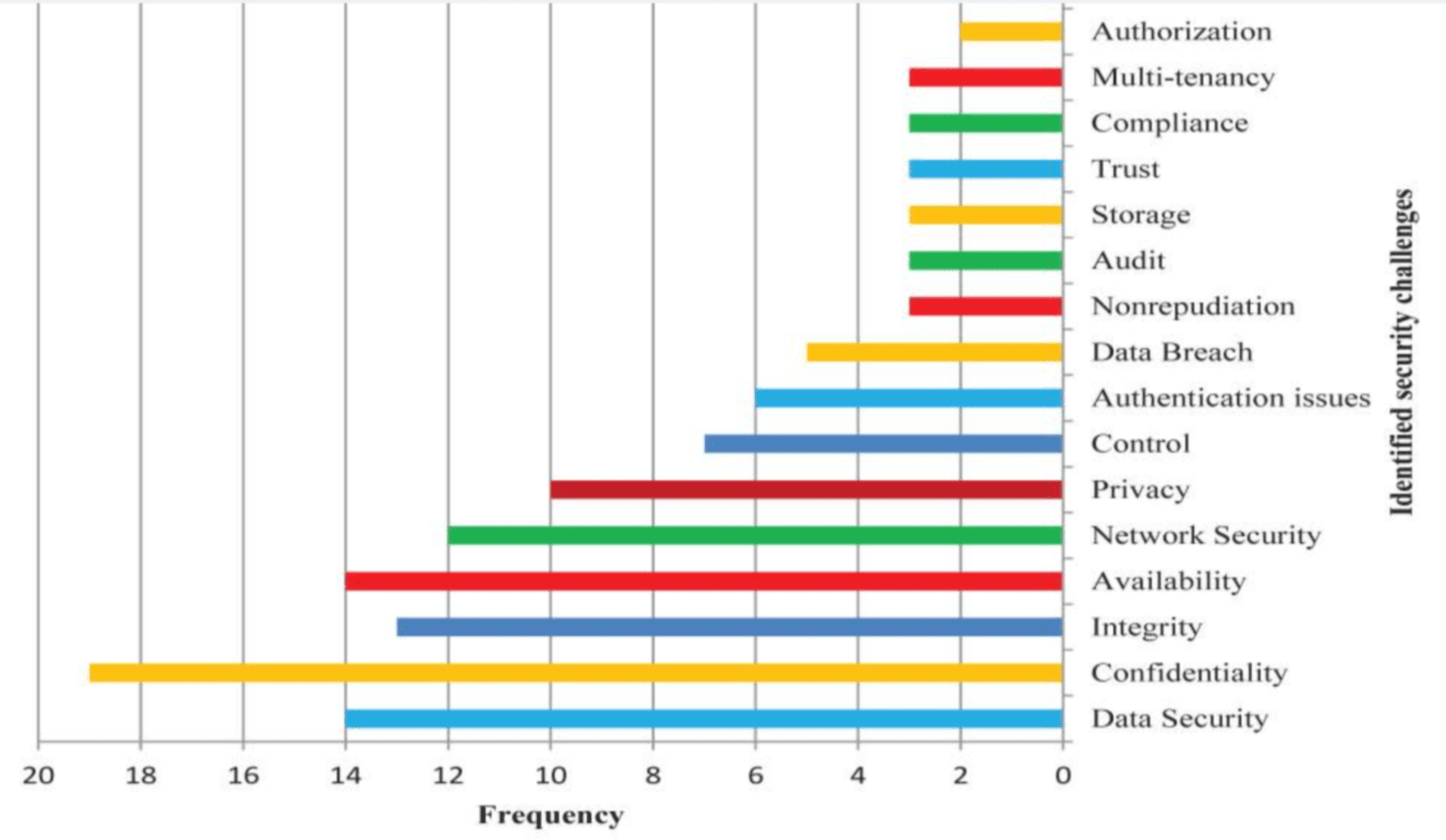
Figure 1: Frequent cloud computing security challenges encountered in healthcare.
- Data governance and access control: Managing data governance and access control in the cloud requires careful planning and implementation of granular access controls, identity management, and data classification policies. Healthcare organizations should establish clear guidelines for data access, usage, and sharing to prevent unauthorized access, data leakage, and compliance violations.
- Cybersecurity threats: Cloud environments are susceptible to various cybersecurity threats, including malware, ransomware, phishing attacks, and insider threats. Healthcare organizations should implement robust security measures, such as network segmentation, data loss prevention (DLP) policies, and endpoint protection, to detect and mitigate potential security breaches in the cloud. Check out this infographic, 6 strategies for IT security managers to improve cybersecurity posture in healthcare, to learn more.
- Shared responsibility model: The shared responsibility model in cloud computing outlines security responsibilities between cloud service providers and healthcare organizations. While cloud providers are responsible for securing the underlying infrastructure, healthcare organizations are accountable for securing their applications, data, and access controls. Acquire a clear understanding of these shared responsibilities to manage cloud security risks effectively.
- Vendor selection and management: Selecting a trustworthy cloud service provider is essential for ensuring cloud security in healthcare. Globally, many hospitals and medical care providers are liable for the financial and legal consequences of any leak or loss of patient data due to third-party vendor breaches. So, it's a good practice for healthcare organizations to thoroughly assess potential vendors' security practices, certifications, and compliance commitments before entrusting them with sensitive patient data.
How can CASBs help healthcare organizations?
CASBs play a crucial role in enhancing cybersecurity for healthcare organizations by providing visibility, control, and compliance over cloud-based applications and data. CASBs can benefit healthcare organizations by helping them:
- Gain visibility into cloud usage: CASBs offer comprehensive visibility into cloud services and applications—both sanctioned applications and unsanctioned shadow IT applications—being accessed by healthcare employees, patients, and partners. This visibility helps healthcare organizations understand their cloud footprint and identify potential security risks associated with unauthorized or risky shadow applications. ManageEngine Log360 is a unified SIEM solution with integrated DLP and CASB capabilities that delivers complete visibility into your cloud, including the use of shadow IT applications as shown in Figure 2.
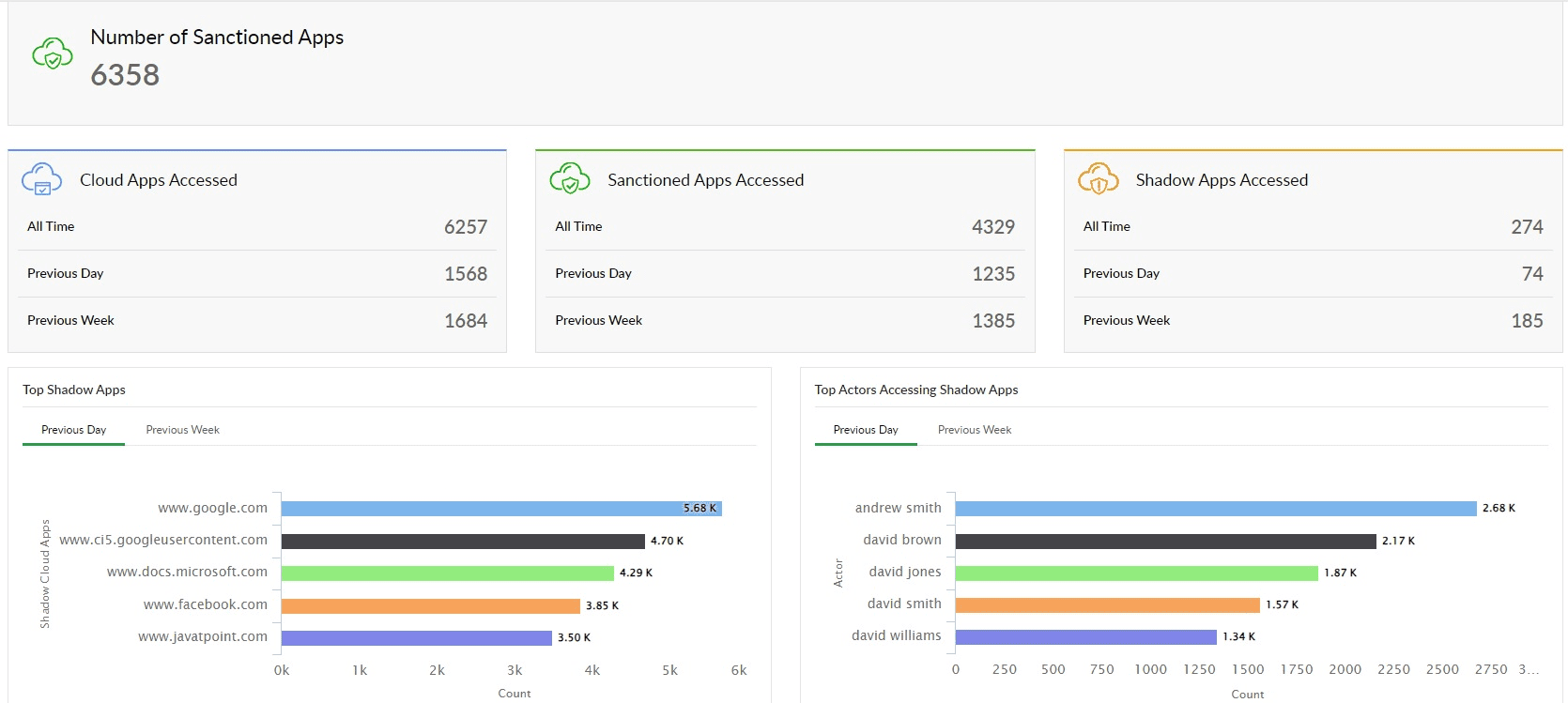
Figure 2: Log360 dashboard displaying insights into sanctioned apps and shadow app access.
- Enhance data protection and control: CASBs enable healthcare organizations to enforce data-centric security policies across cloud services. They offer capabilities such as DLP and access controls to safeguard sensitive patient information stored and shared in the cloud, thus preventing data breaches. Log360 helps healthcare organizations configure DLP policies for cloud services and applications as shown in Figure 3.
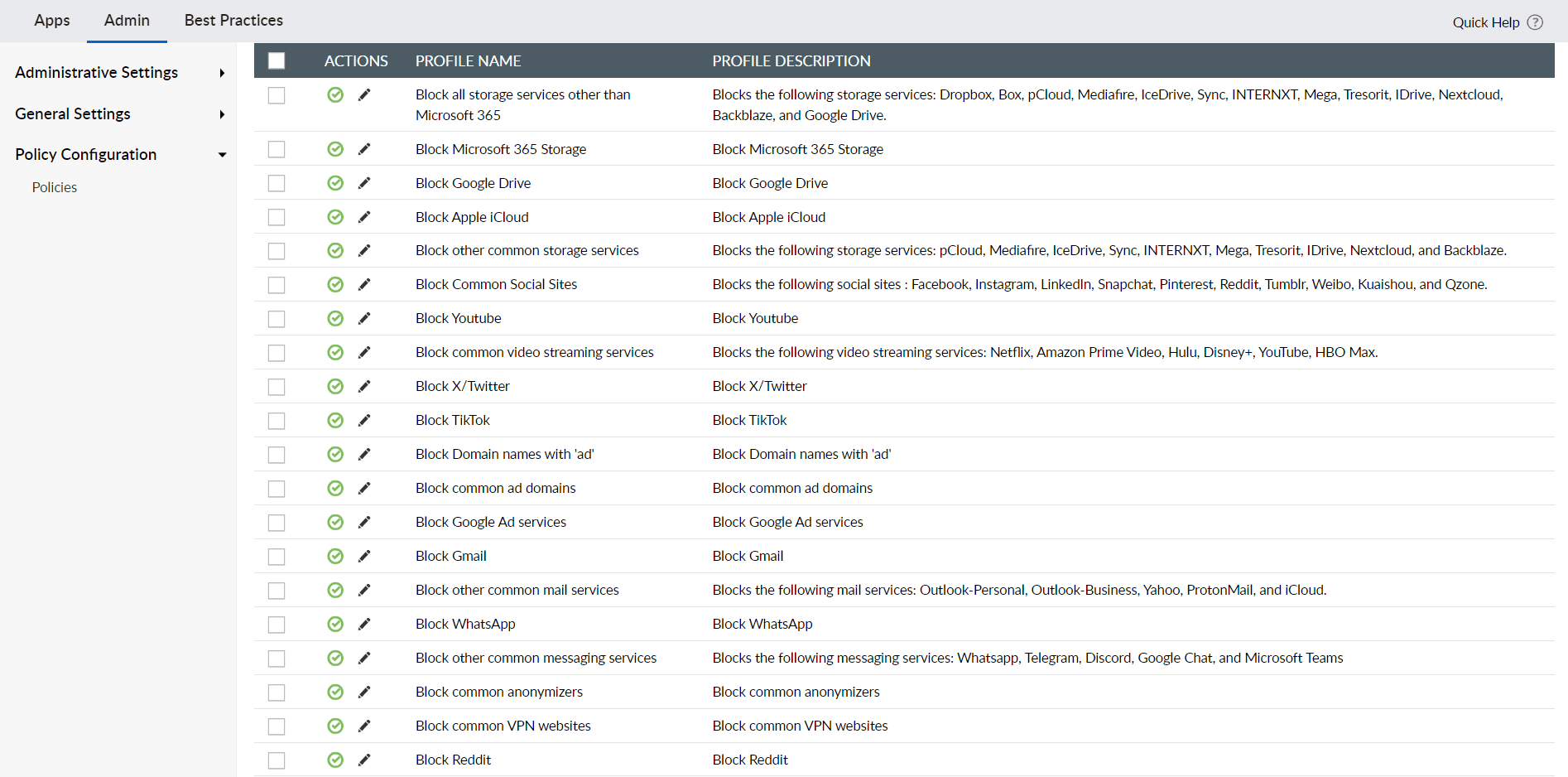
Figure 3: Configuring cloud DLP policy profiles in Log360 to control the use of cloud apps.
- Detect security threats in real-time: CASBs help healthcare organizations detect and mitigate cloud-related security threats such as malware, ransomware, and account compromises. An effective SIEM solution like Log360 provides integrated user and entity behavior analytics (UEBA), as well as CASB, and DLP capabilities. Log360 also leverages threat intelligence platforms and open-source threat feeds to identify and alert the hospital's IT security team of suspicious activities and potential security incidents in real time.
- Ace compliance monitoring and reporting: Healthcare organizations are bound to comply with stringent regulatory mandates like the Health Insurance Portability and Accountability Act (HIPAA) and General Data Protection Regulation (GDPR). These mandates require security measures to monitor users, devices, and their activities for identifying compliance violations and their offenders; and CASB solutions can help with this.
Wondering how to choose your CASB vendor? Read CASBs for multi-cloud: 3 tips to choose the right CASB solution for your multi-cloud environment
Leveraging CASB in healthcare: A few use cases
Let's understand these three CASB use cases with the help of real-life examples.
Data exfiltration or data leak prevention: Mark, a final-year resident, is preparing to become a physician certified by The American Board of Surgery. In his desperation to ace his exams, he begins using his personal cloud account to store patient records and medical images so he can access them—outside the hospital network—for last-minute case study revisions. Due to weak passwords and poor cyber hygiene, his cloud account gets hacked, and patient data gets exposed online.
However, with a CASB solution, the hospital's IT security team would be alerted when Mark starts uploading sensitive patient data to his personal cloud, allowing the team to act quickly, thus preventing a data breach before it can cause damage. Log360 identifies cloud apps being accessed, any file uploads in the cloud, and can configure policies to block the use of personal cloud accounts like Google Drive and Dropbox to prevent data exfiltration attempts. By blocking unauthorized cloud storage services and implementing access controls through CASB, Mark's hospital can ensure that patient data remains secure and compliant with HIPAA regulations.
Shadow IT discovery and management: Ralph is a senior trauma surgeon working for Grace Hospital, a multi-specialty teaching and research medical institution. In his efforts to create visual presentations for his case report, Ralph uses an unsanctioned, easy-to-use, third-party design app to create his slide desk. His case report contains sensitive data like an overview of a patient's personal details, including relevant demographic details, their medical history, the symptoms for which they were admitted, the medications they received, their treatment plan, and patient outcomes. Since Ralph is using a shadow app to create the slide deck with sensitive data, Grace Hospital's IT team has no way to verify the security of the app or configure policies to ensure that it's being used by authorized staff after following proper authentication measures. This increases security risks and exposes the hospital to threats such as data breaches, malware, and cyberattacks.
However, with a CASB-integrated SIEM solution like Log360, Grace Hospital can discover and ban shadow applications used by Ralph, and other medical practitioners including doctors, surgeons, and physicians. The various shadow cloud applications that Log360 can ban also include unapproved messaging and collaboration apps used among nurses and clinical staff. Log360 provides visibility into shadow IT applications, identifies security vulnerabilities, and allows the organization to assess the risks associated with these unauthorized apps. With Log360, Grace Hospital's IT team can enforce policies to either secure approved collaboration platforms or block unauthorized applications, thereby reducing the risk of data breaches and ensuring compliance with regulatory requirements.
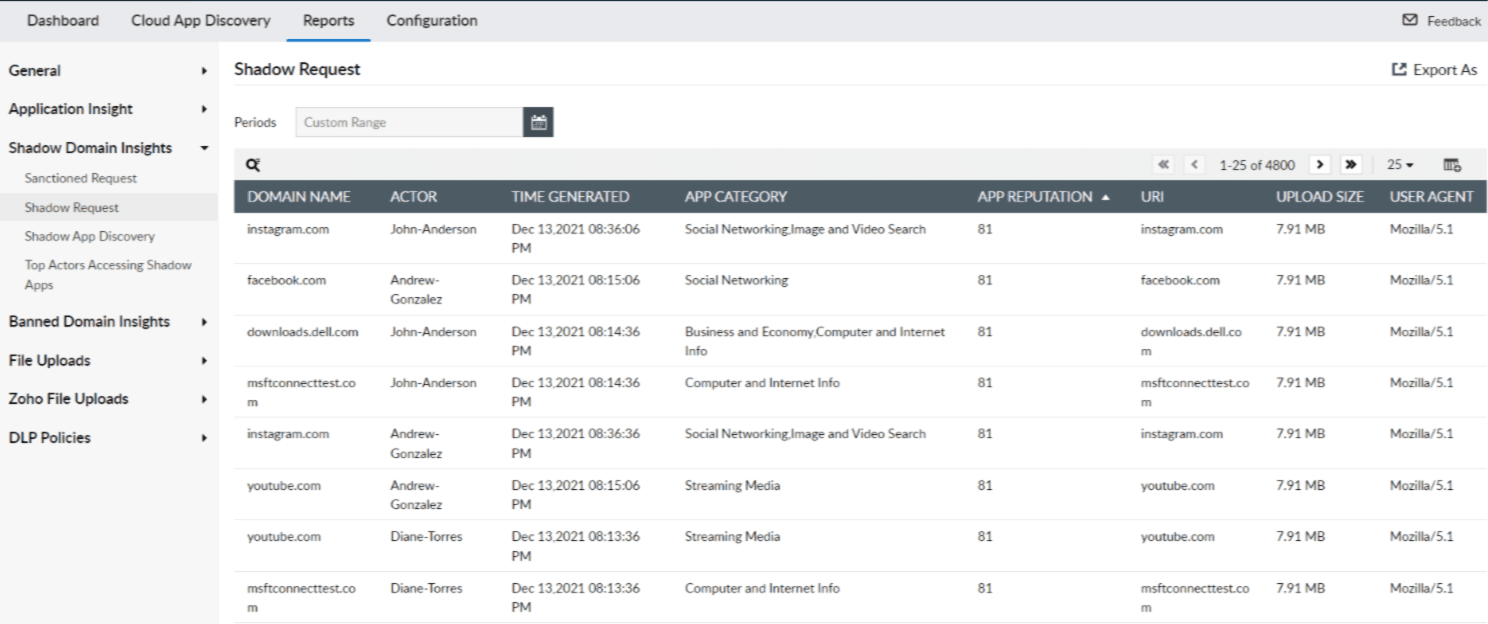
Figure 4: Log360 reports providing insights into shadow app requests.
Compliance management: Hospitals and medical institutions frequently undergo audits to ensure compliance with regulatory mandates such as HIPAA and the GDPR. With its integrated CASB capabilities, Log360 helps healthcare organizations monitor cloud usage, as well as identify compliance and security gaps. This solution generates audit-ready reports to demonstrate adherence to regulatory requirements as shown in Figures 4 and 5. By providing detailed insights into data access, sharing, and usage patterns, and enforcing data protection policies, Log360 helps healthcare institutions address compliance issues proactively and mitigate potential risks to patient privacy and data security.
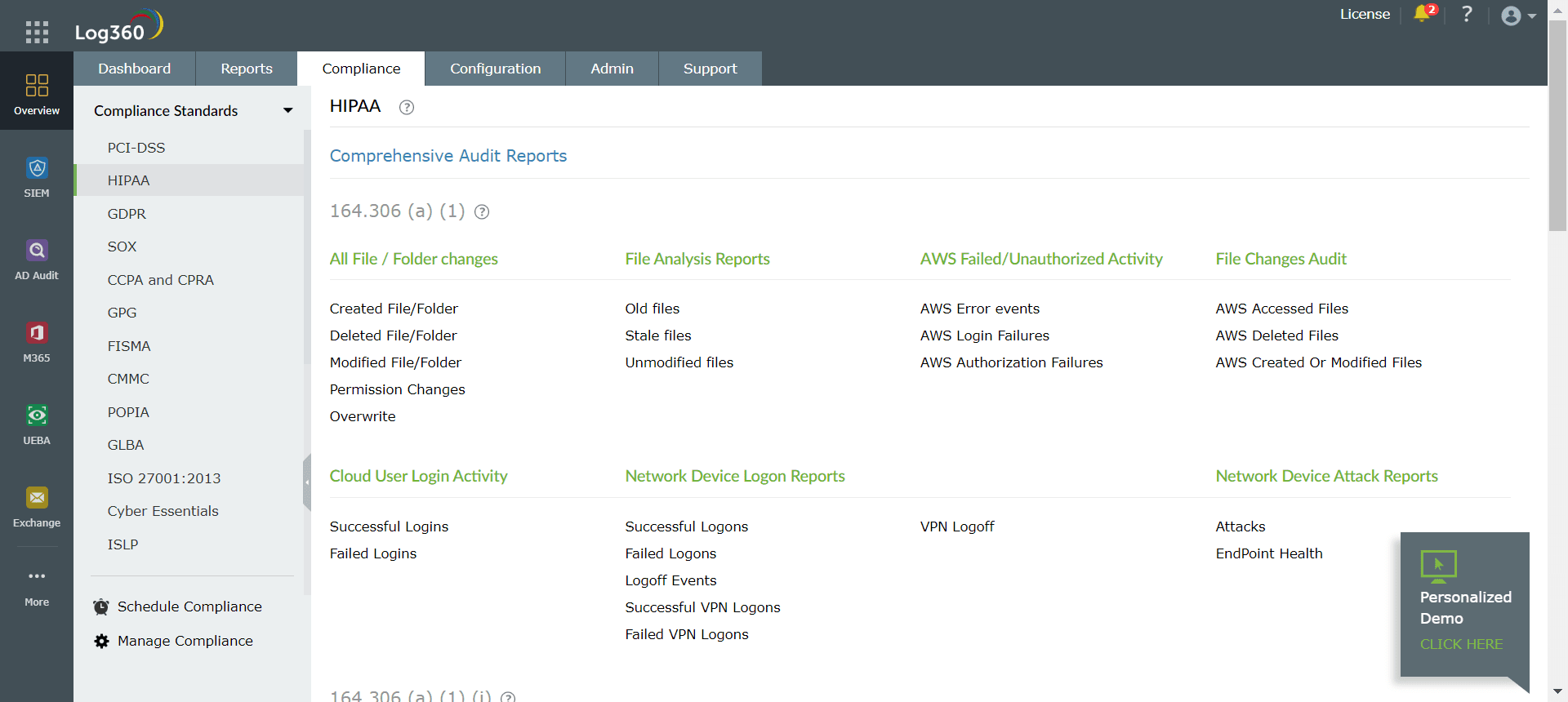
Figure 5: Log360 dashboard displaying comprehensive audit reports for HIPAA compliance.
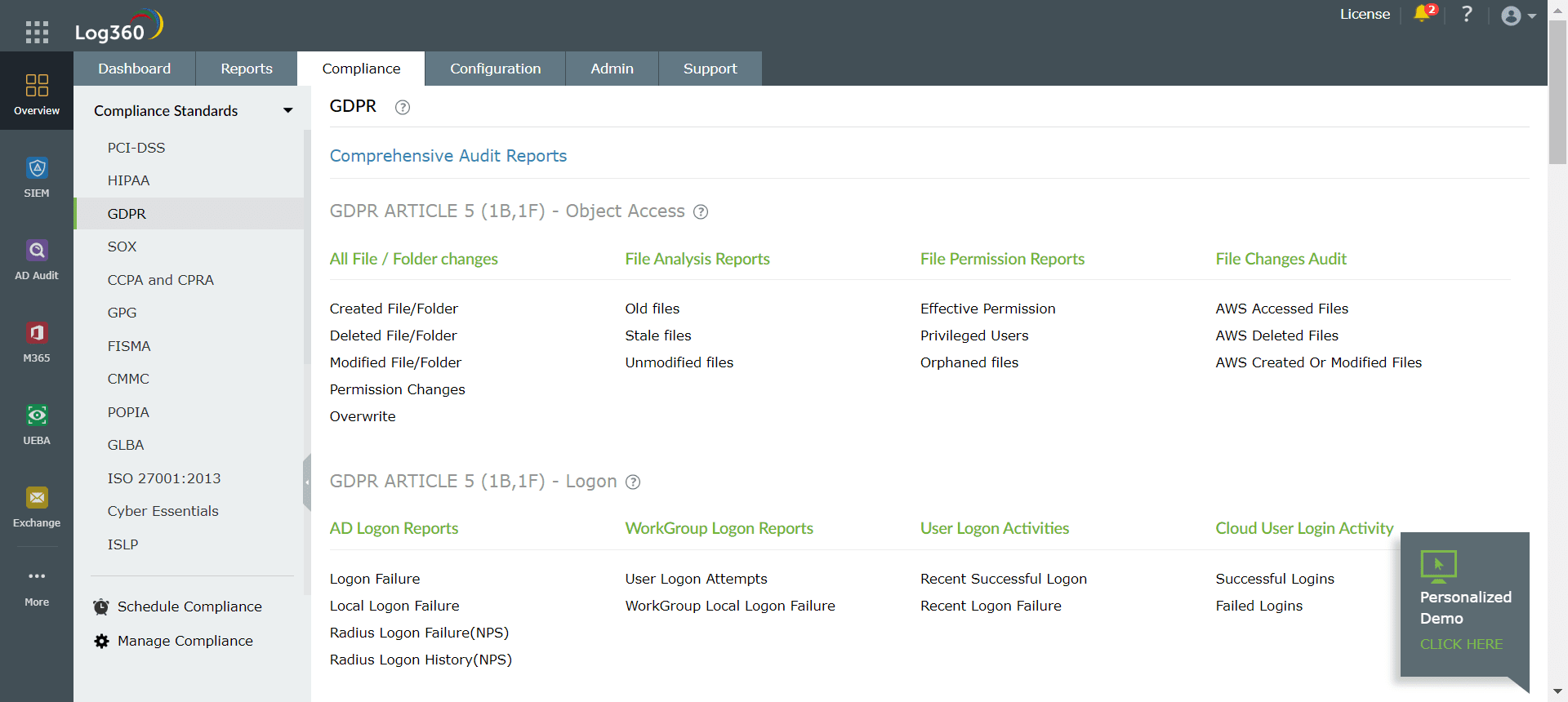
Figure 6: Log360 dashboard offering comprehensive audit reports for GDPR compliance
How to convince the hospital board to invest in a CASB-integrated SIEM solution
Healthcare organizations, while allocating budget, are more prone to spend it on tools to improve patient care rather than on cybersecurity. But, by demonstrating its value proposition, IT security managers can effectively persuade the hospital's board of directors to prioritize investment in a CASB-integrated SIEM solution as a critical component of their organization's cybersecurity strategy. To that effect, cybersecurity managers can:
- Highlight regulatory compliance requirements: Emphasize the importance of compliance with regulations like HIPAA and the GDPR, and demonstrate how a CASB-integrated SIEM solution assists in meeting these requirements, and in generating audit-ready reports effectively.
- Quantify potential cost savings and demonstrate ROI: Hospitals will be fined for compliance violations and security breaches. These fines and settlements might even cost hospitals millions of dollarsas documented in The HIPAA Journal. Security managers should illustrate the potential cost savings resulting from reduced data breaches, compliance fines, and operational inefficiencies associated with unmanaged cloud usage and security incidents. You can calculate the cost savings from your SIEM implementation using our SIEM calculator.
- Align with business objectives: Highlight how a CASB-integrated SIEM solution aligns with the hospital's strategic goals of protecting patient data, maintaining trust and reputation, and ensuring continuity of healthcare services.
- Provide Proof of Concept (POC): Conduct a POC or pilot implementation of CASB to demonstrate its effectiveness in addressing specific security challenges and delivering tangible benefits to the organization. You can download a fully functional, free-trial version of Log360 and explore how its integrated CASB, DLP, and UEBA capabilities help your organization improve its security posture and meet crucial security needs.
ManageEngine Log360 may be the best CASB solution for your hospital's cloud security needs. Sign up for a free personalized demo and talk to our product experts.
FAQ
- What is CASB?
-
Gartner® defines a cloud access security broker, or CASB, as an "on-premises or cloud-based security policy enforcement point, placed between cloud service consumers and cloud service providers to combine and interject enterprise security policies as the cloud-based resources are accessed."
- What is the use of CASB in cloud security?
-
CASB is essential for secure cloud access, especially in healthcare organizations that store protected health information (PHI) and other sensitive medical information of patients. CASBs play a crucial role in addressing the security challenges associated with cloud adoption by providing comprehensive visibility, control, and protection over data and activities in the cloud environment. By leveraging CASB capabilities, organizations can embrace the benefits of cloud computing while effectively managing security risks.
- How is cloud computing used in healthcare?
-
Cloud computing has transformed the healthcare industry by providing innovative solutions to various challenges faced by healthcare organizations, patients, clinicians, and nursing staff. This includes enabling healthcare providers to store, manage, and access PHI and other electronic health records securely, streamlining workflows, increasing accessibility to care with the help of telemedicine and remote patient monitoring, and enhancing operational efficiency across the healthcare ecosystem.
- CASB vs SIEM: Which one to choose?
-
CASB focuses on securing cloud applications and data, while SIEM focuses on monitoring and analyzing security events across the entire IT infrastructure (both on-premises and in the cloud). CASB and SIEM can act as standalone cybersecurity solutions. But, integrating SIEM with CASB enables correlation of cloud-related security events with broader security incidents. This enhances visibility, detection, and response capabilities across your organization. Modern SIEM solutions like ManageEngine Log360 have in-built CASB capabilities.



